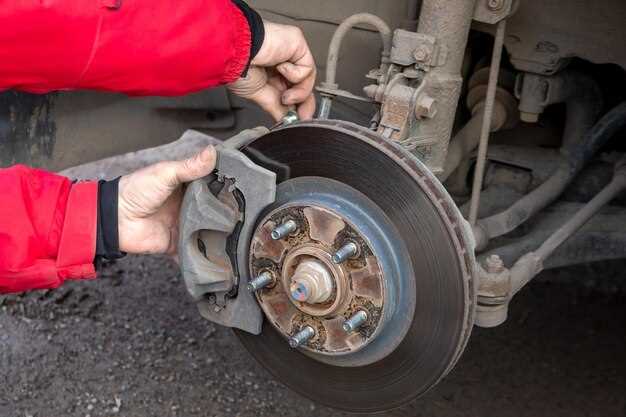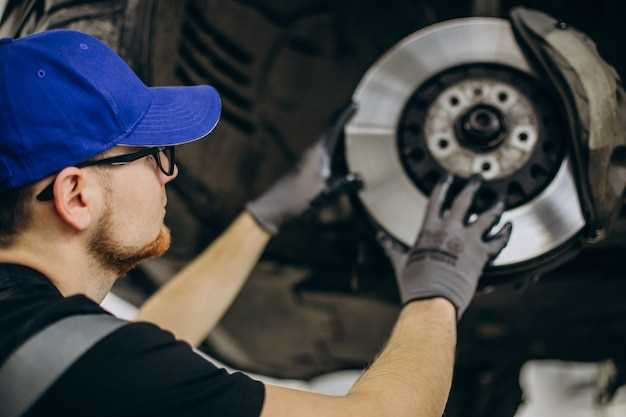
When it comes to racing, the importance of a reliable and high-performing brake system cannot be overstated. Upgrading your brake system is essential for enhancing overall performance on the track. Advanced braking technologies not only improve stopping power but also contribute to better handling and control during intense racing scenarios.
The right upgrades can significantly impact your lap times and racing experience. Whether you’re seeking to reduce brake fade or enhance responsiveness, understanding the components of a track-ready brake system is crucial. Upgrades might include high-performance brake pads, rotors, and calipers that are specifically designed for the rigors of racing.
Ensuring that your vehicle is equipped with a top-tier brake system can make the difference between a podium finish and an average performance. Implementing these upgrades tailored for racing can lead to increased safety and confidence while navigating challenging tracks at high speeds. In this article, we will explore various options for brake system upgrades you can make to achieve peak performance on the race course.
Choosing the Right Brake Pads for Racing Conditions
Selecting the appropriate brake pads for racing is crucial for optimal performance and safety on the track. Racing pads are specifically engineered to withstand the extreme conditions encountered during competitive driving, such as high temperatures and sustained deceleration forces.
When choosing brake pads, consider the material composition. Racing pads typically fall into three main categories: organic, semi-metallic, and ceramic. Organic pads offer low dust and quiet operation, but may not perform well under intense heat. Semi-metallic pads, on the other hand, provide superior performance at elevated temperatures, making them a popular choice among racers. Ceramic pads tend to deliver consistent performance while generating less noise, but they may not be suitable for all racing conditions.
Temperature range is another critical factor. Racing pads are designed to operate within specific temperature thresholds. Selecting pads with a suitable temperature range for your racing environment will help ensure consistent braking performance. Additionally, evaluate whether the pads offer fade resistance, which is the ability to maintain their performance under prolonged heavy use.
Friction levels are also essential when selecting brake pads. Higher friction pads yield better stopping power but can lead to more rapid wear and tear. It’s important to balance the need for aggressive braking with the longevity of the pads, especially during longer races.
Compatibility with your brake system is a final consideration. Ensure that the chosen pads fit your calipers and rotors correctly to avoid any installation issues and to maximize performance. Consulting with your vehicle manufacturer or brake system specialist can help in making informed decisions regarding compatibility.
In conclusion, the right brake pads are integral to racing performance. By considering material composition, temperature range, friction levels, and compatibility, you can choose brake pads that will enhance your racing experience while ensuring safety on the track.
Upgrading Brake Rotors for Improved Heat Dissipation

In the world of racing, performance is paramount, and effective brake systems play a crucial role in maintaining control and safety. One key upgrade that can significantly enhance braking performance is the selection of high-quality brake rotors. Upgrading rotors not only improves overall braking efficiency but also contributes to better heat dissipation, which is essential during intense racing scenarios.
Standard brake rotors can overheat quickly under high-stress conditions, leading to diminished braking performance or even brake fade. This is where upgraded rotors come into play. Performance rotors are typically designed with advanced materials and engineering to withstand the extreme temperatures generated during racing. These rotors often feature drilled or slotted designs, allowing for enhanced airflow and faster cooling. This helps to maintain optimal operating temperatures, ensuring consistent braking performance lap after lap.
Another advantage of upgrading to high-performance rotors is the reduction of weight. Lighter rotors can contribute to improved vehicle dynamics, allowing for quicker acceleration and handling responses. This aspect is particularly beneficial when navigating tight corners or when rapid speed changes are required on the track.
Installing upgraded brake rotors is a critical component of a comprehensive braking system enhancement. When combined with high-performance brake pads and fluid, the result is a brake system that operates efficiently and reliably under racing conditions. Ultimately, the right rotor upgrade will lead to improved lap times and increased driver confidence, making it a worthy investment for any serious racer.
Integrating Brake Lines and Fluid for Maximum Responsiveness
Upgrading brake lines and fluid is crucial for enhancing the performance of your braking system. The choice of brake lines significantly impacts how effectively braking force is transmitted from the pedal to the brakes. Stainless steel braided lines are often preferred because they reduce expansion under pressure, providing a firmer and more consistent brake feel. Unlike standard rubber lines, which may swell, these upgraded lines offer greater responsiveness during aggressive driving.
In addition to brake lines, the type of brake fluid used plays a critical role in achieving maximum performance. High-performance brake fluids, with higher boiling points, can withstand the intense heat generated during track events. This prevents brake fade, allowing for consistent stopping power. It is essential to select fluid that meets or exceeds the specifications required for your vehicle to ensure reliability and performance under pressure.
Regular maintenance of both brake lines and fluid is also necessary to sustain optimal performance. Old or contaminated fluid can lead to reduced responsiveness and increased braking distances. Flushing the brake system and replacing the fluid at recommended intervals helps maintain clarity and performance. By integrating these upgrades, you enhance the overall braking effectiveness, ensuring a safer and more responsive driving experience on the track.



